|
More Changes Although the brewery still used
horse-drawn vehicles, it came to depend more and more on
powered road vehicles. In 1925 the vehicle fleet consisted
of the following:
|
12 |
- |
4 ton flat bodied Leyland trucks |
|
1 |
- |
2 ton Guy van |
|
3 |
- |
20 cwt Guy vans |
|
7 |
- |
8 hp. Rover cars for the travellers |
|
1 |
- |
Daimler staff car |
The vehicles delivered beer in casks up
to a 35 miles radius of Wolverhampton. The Leyland trucks
delivered 750 tons a week. They were well maintained by H.
H. Brierley, the brewery’s maintenance engineer, and H. Luce
and the garage staff. It took forty minutes to load ten of
the Leyland trucks.
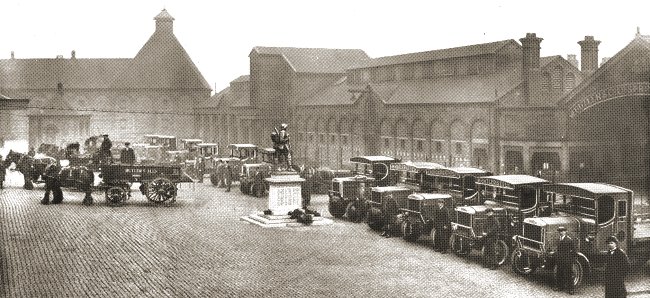
Leyland lorries beside the war
memorial. |
|

Guy one-ton vans at the loading
deck. They were used for the delivery of wines and
spirits. |

From the February 1925 edition of Butler's
magazine.
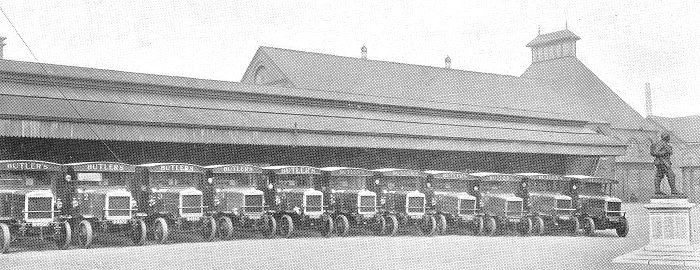
The fleet of lorries.
| The brewery's Leyland lorry
drivers and mechanics in 1926. |
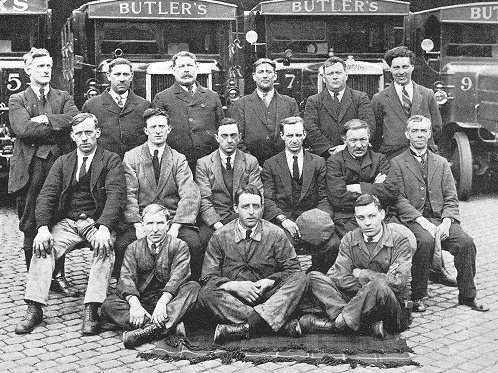 |
| On 1st May each year the annual inspection of the
company’s vehicles took place. After the inspection the
vehicles paraded around the main streets in Wolverhampton.
The staff used to compete for the best turnout, and the
lowest petrol consumption. |
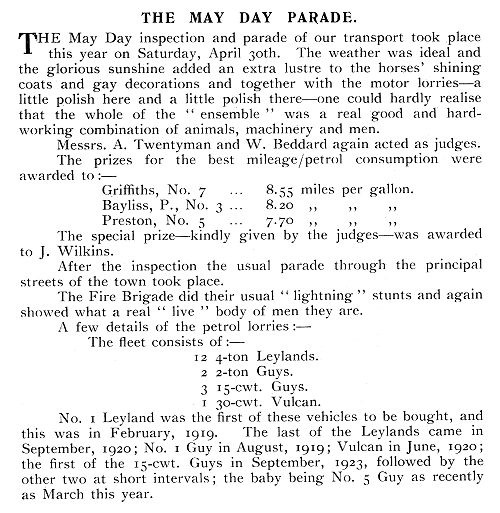
From the May 1927 edition of Butler's
magazine.
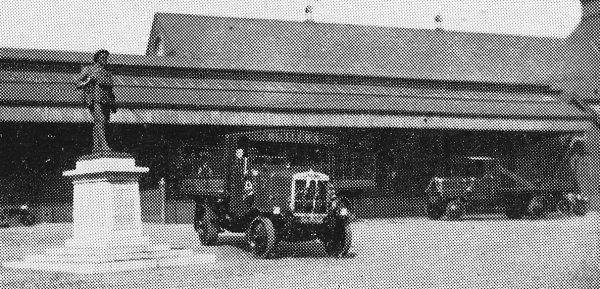
Part of the May Day parade.
 |
Judging the entries in the 1929
May Day Parade. |
| Every year the brewery entered at least one of
the lorries, suitably decorated, in the annual Wolverhampton Carnival,
and the annual Wolverhampton Hospitals Carnival. Butlers
won the first prize in the Hospitals Carnival a number of
times, including 1928 and 1929. |

The brewery's winning entry in the
1929 Wolverhampton Hospitals Carnival. |
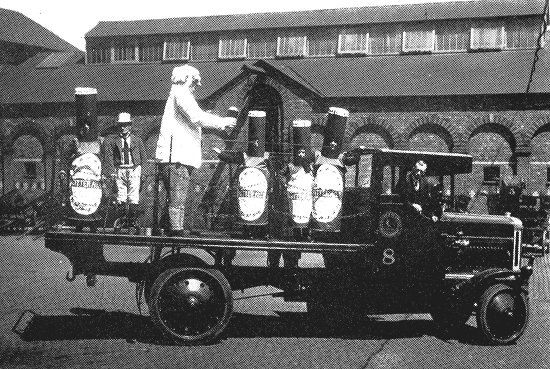 |
The brewery's 1928
entry in the annual Wolverhampton Hospitals Carnival,
featuring an old 'William Butler'. |
| In 1925 the company’s mess rooms,
starting with the cooperage mess room, were refurbished and
brought up to date, and in 1926 an energy efficient liquor
boiling plant was installed to overcome problems of high pH
values. In the same year Mr. Yardley became
Vice-Chairman of the company, and the head traveller Mr. A.
E. Wood retired because of ill health. Mr. Wood, who became
Mayor of Wolverhampton in 1927, and in 1928, died on 26th June 1932. His
obituary from Butler's magazine is below his photograph. The company continued to build new pubs
and rebuild some of the older run-down establishments. It
had long been the company's policy to maintain its public
houses in a good state and bring older premises up-to-date.
In December 1929 the Giffard Arms in Victoria Street,
Wolverhampton reopened after being totally rebuilt. In the
same month the newly built Bushbury Arms opened in Low Hill,
Wolverhampton.
In 1930 other new pubs opened including The
Merry Hill, at Merry Hill, Wolverhampton, the Monkmore at
Shrewsbury, and the Cambridge at Walsall. In October 1931
the Dudley Arms, in Dudley Street, Wolverhampton reopened
after being rebuilt. |
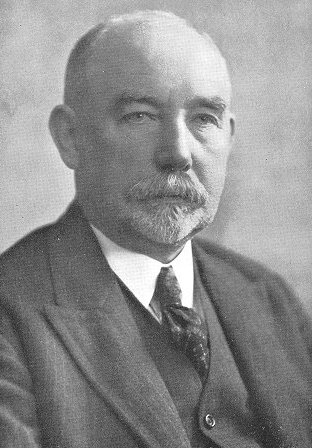
Mr. A. E. Wood. |
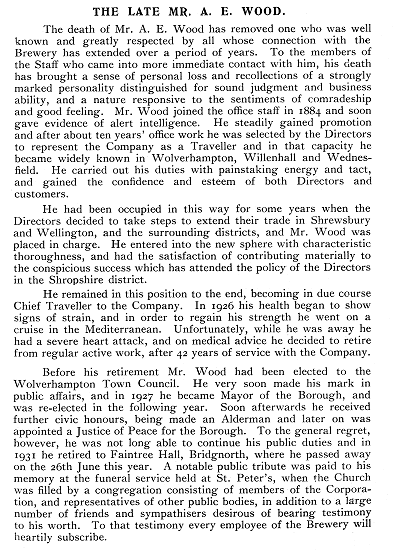
From the July 1932 edition of Butler's
magazine.
 |

From Butler's magazine, July 1926. |
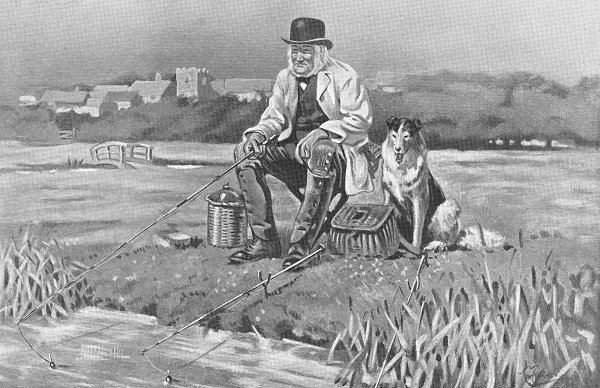
A painting of William Butler,
known as Butler's 'Old Man', fishing by Tom Purvis. From
Butler's magazine, June 1926. |

| From the October 1928 edition of Butler's
magazine:
 |
|
|
Cooperage Apprentice’s Outcoming
A most interesting
function took place in the Cooperage on
February 28th, when Mr. R. Birch, junr.
completed his seven years' apprenticeship on
the same day that he attained his majority.
In accordance with a time-honoured custom,
shortly before noon his fellow coopers
commenced the process of hammering him in,
and this was completed exactly on the stroke
of twelve, and Mr. Birch found himself well
and truly trussed up. The origin of this
interesting ceremony seems to be lost in the
mists of antiquity, and certainly after
witnessing it we are quite prepared to
believe that it dates back to pagan times.
On the conclusion of this ceremony a
sandwich lunch was served in the Coopers
Shop, and was presided over by Mr. W. R.
Wilson, while Mr. A. W. Yardley was also
present. After the lunch Mr. Wilson
presented Mr. Birch with his indentures and
expressed the hope that he would live long
to enjoy work as a cooper. |
|
|
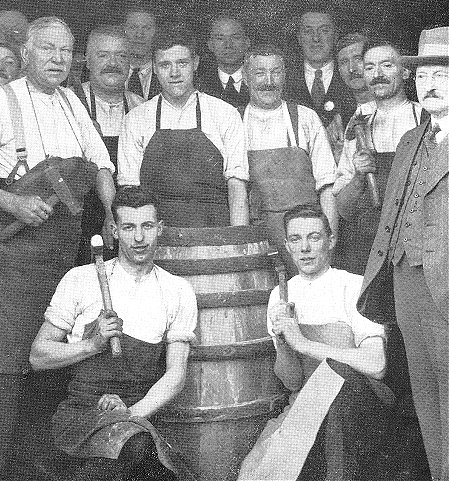
From the March 1928 edition of
Butler's magazine. |
|
It is interesting to note that it is
twenty-six years since there has been a
similar ceremony at the Brewery, but we
understand that there will not be such a
long interval before the next occasion, as
two more apprentices have nearly concluded
their time. |
|
|
|
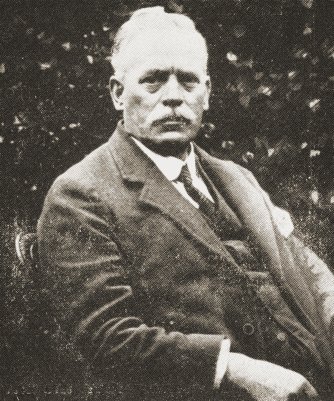
Mr. H. E. Griffiths. |
|
From the February 1929
edition of Butler's magazine:
 |
|
|
|
In November 1929, weekly first aid
classes began at the sports and social club under the
supervision of Mr. Fowler from the surveying department.
In
the same month the annual presentation of the collection
from the hospital fund took place. £164.3s.0d was
collected and divided as follows:
|
Royal Hospital £105
Women’s Hospital £25
Eye Infirmary £25
District Nurses £6
Sister Dora Convalescent Home £3.3s.0d.
|
Around 1930 the Wilson family purchased
Rudge Hall, near Pattingham, and its 4,500 acre estate. Mr.
W. R. Wilson was a keen tennis player who played at county
level for many years. He built the double grass courts at
Rudge Hall which are still there today.
|

A Butler's long service certificate. |
| In 1931 the company started to bottle
‘Old Ale’, and on June 14th a great storm led to the
flooding of the cellars of many of the company’s public
houses in both Wolverhampton and Walsall. In some cases the
ground floor was also under water. |
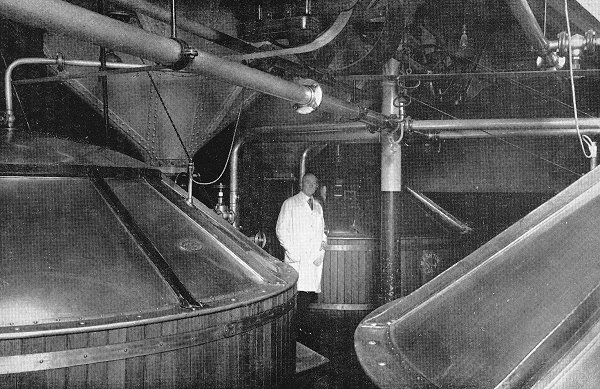 |
The mash room in 1930.
The figure in the white coat standing
by one of the mash tuns is J. P. Pye, one of the brewers. |

The November 1930 Whist Drive and Dance.
|

Captain Theodore Addenbrooke's
grave at Penn. |
On 13th February, 1931, Captain Theodore Addenbrooke died at the age of 64, at his home, ‘Pennover’,
in Vicarage Road, Penn.
The funeral took place at St. Bart’s
Church, and he was buried in the church graveyard.
He had a distinguished military career. The following
is from the supplement to the London Gazette, dated 14th
November, 1914:

He was succeeded on the Board by Mr. R. W. R. Wilson,
son of the Chairman
In the same year, Butler’s Estate Manager, Mr. W. Lowe,
who had been with the company for forty six years was
appointed to the Board of Directors.
In 1932 the fridges used to cool the wort were replaced
by heat exchangers. |
|
From the Express &
Star newspaper, 23rd May, 1917:
 |
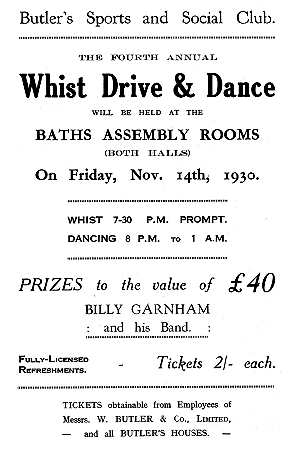
|
|
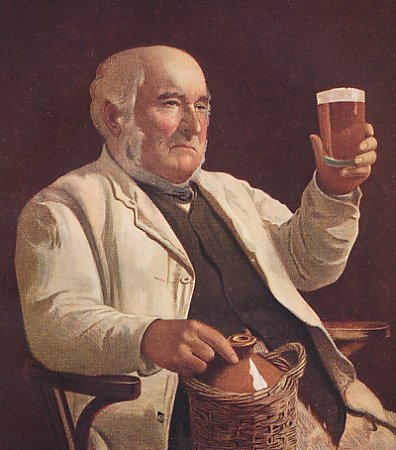
'The old man', the well known
image of William Butler. |
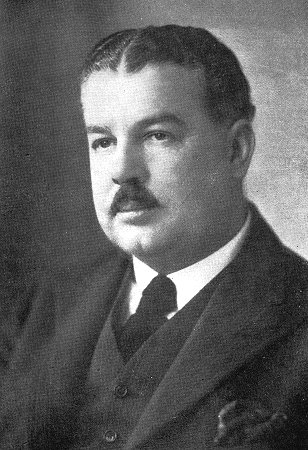
Mr. W. Lowe. |
|
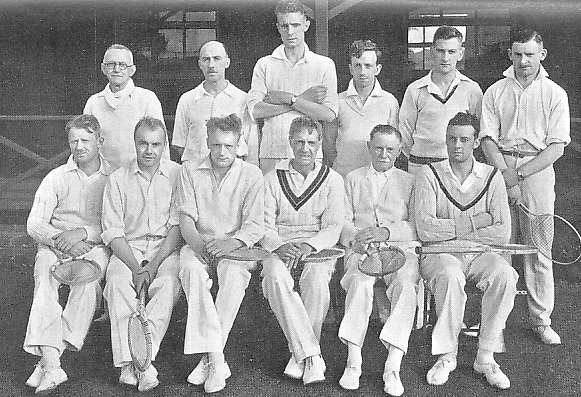
Participants in the Directors'
tennis match in 1932:
Back row left to right:
H. H. Brierley, I. G. Lees, J. Watson, H. Hill, A. W. N.
Fearn,
and C. J. N. Hamer.
Front row left to right: J. H. N. Collis,
G. Fenton, F. Yardley, W. R. Wilson,
W. Downing and N. Fox. |
|
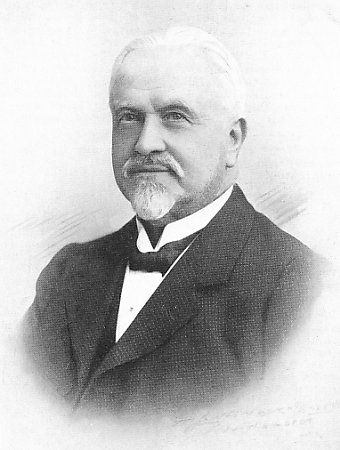
Mr. Samuel Bayliss. |
 |
| Ex-Butler's Director, Mr. Samuel Bayliss died on 19th
March, 1932. His obituary appeared in the April edition of
Butler's magazine:
|
In 1935 another ex-member of Butler's staff died:
|
Express & Star: 1st February, 1935
Mr. G. T. Lawley. Dead. Aged Historian of
Bilston.
Mr. G. T. Lawley, who died at his home
Priestfield House, Priestfield, near Wolverhampton, last
night in his 91st year, was well-known not only in Bilston
and Wolverhampton, but throughout South Staffordshire.
For well over half a century he was a
traveller for Messrs W. Butler & Co., Springfield Brewery,
Wolverhampton, and on his retirement in 1920 he and Mrs Lawley were presented with a case of silver tableware and a
reading lamp.
|
|
|
|
In 1935 Mr. Frank J. Yardley, son of
Mr. A. W. Yardley joined the Board. The following year a new
fermenting room opened with facilities for single-vessel
fermentation.
By 1937 sales of bottled beers had
grown to such an extent that a second bottling plant had to
be added in number 2 bottling stores. It was used for
bottling ‘All Malt Stout’.
Two years later, at the onset of
war, a diesel-powered electricity generating plant was
installed to allow the brewery to cope with any war-time
power cuts.
Another member of the Butler family,
Mr. Eric Butler, son of Mr. Samuel Butler joined the company
in 1938. Samuel remained on the Board of Directors until
1950.
The Managing Director Mr. R. W. R. Wilson
personally knew every one of the 900
staff at Springfield, and ran the brewery until his death in
1952. He had been a Lieutenant-Colonel in the home guard and
received an OBE for his work with the 8th Battalion of the
Shropshire Home Guard. He had a great love of horses and
managed to keep the brewery's fifty six drays in operation. |

Company Director Mr. A. W. Yardley.
|
| Two members of the next generation of the Wilson Family
also worked at the brewery. James, and Christopher R. W.
Wilson, who worked there for two summers before going on to
become a lawyer. Christopher's cousin John Dick became
Managing Director in the 1970s. |
|

Mr. Samuel Butler. |
|

Mr. Eric Butler. |
 |
The diesel-powered electricity
generating plant. |
| Another view of the diesel-powered
electricity generating plant. |
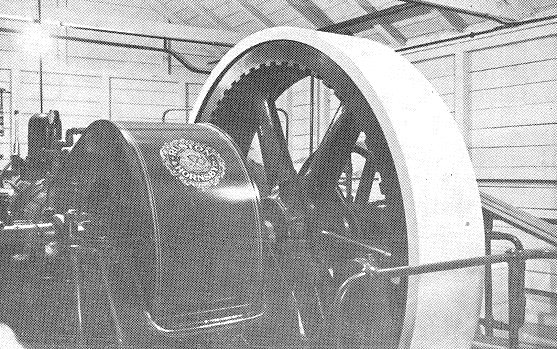 |
|

May Day 1940 A.R.P. demonstration. |
|

May Day 1940 inspection. |
 |
|
 |
|
Covers of Butler's magazine. |
|
| In 1949 a new laboratory, offices, and a fitters’
workshop were built against the side of the original
fermenting room, and in 1954 to 1957 the coppers were
converted to steam heating. |
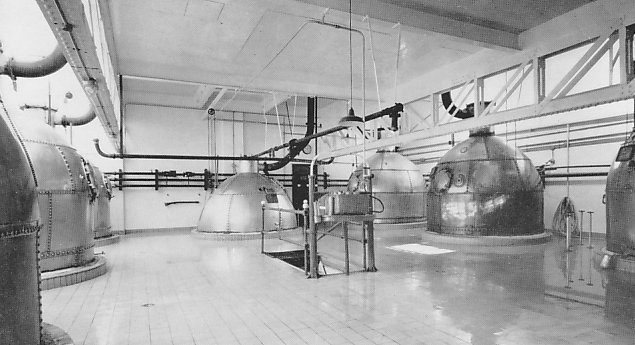
The steam-heated coppers.

The collecting and fermenting room.
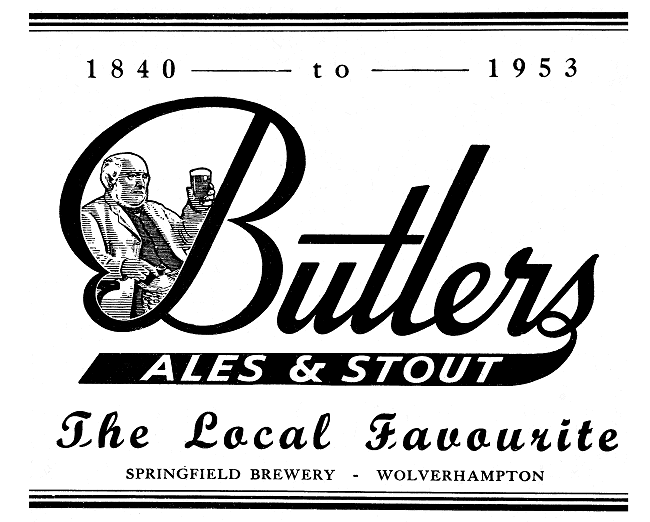
An advert from 1953.
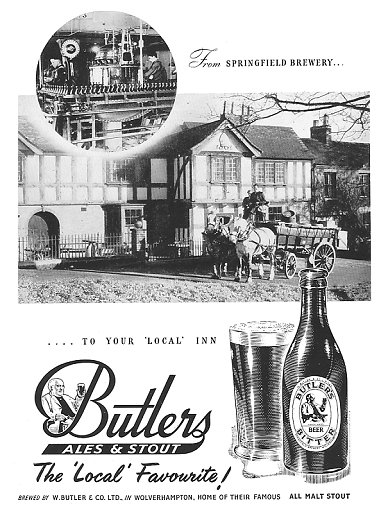
An advert from 1956.
 |
|
 |
|
 |
Return to
Further Expansion |
|
Return to
the beginning |
|
Proceed to
Take Over |
|